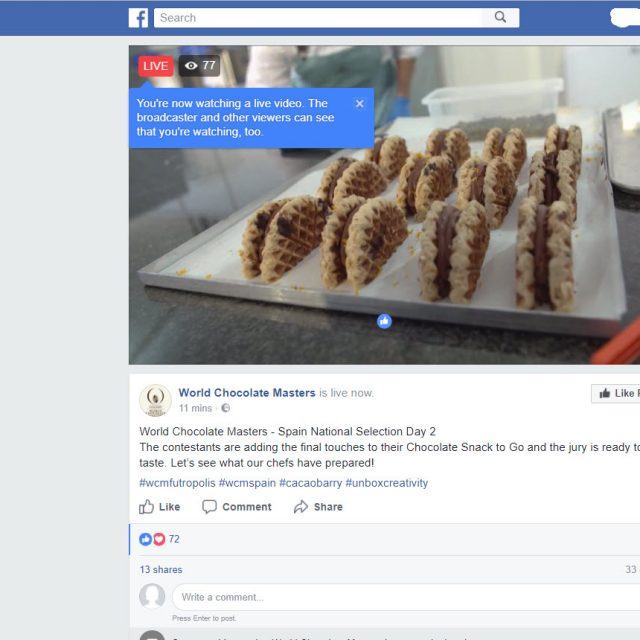In this post, I’ll be looking at 4 types of video that B2Bs can create; but first of all, let’s take a look at why using video should be on your agenda.
Benefits of Video for Digital Marketing
-
Videos Help to Build Trust
Humans have a desire to connect and interact, something which can be hard to do with the sheer amount of content – especially written – that’s online. Videos can help to give a face to your business, making your B2B more relatable and trustworthy. Creating video content showcasing your customers’ stories or products can add an element of transparency and authenticity, helping you to connect with your prospects or consumers.
-
Videos Grab Attention
The average attention span has been dropping for years, and in 2015 was reported to be just 8 seconds. Guess what the average attention span of a goldfish is?! 9 seconds. But don’t despair! According to Statistic Brain, the average length watched of a video is 2.7 minutes – that’s plenty of time to get your key messages across.
-
Videos Help Consumers Convert
Add a video to your landing page, and you could potentially improve conversions by 80%! On top of this, after watching a product video, 64% of viewers are likely to purchase that product online. Consider the above stats, and you have 2.7 minutes to get your audience to convert.
-
Videos Increase Engagement Metrics
Adding interactive content to your website not only improves user experience by helping users to understand your products or services, it also keeps visitors on your site longer. Engagement metrics such as bounce rate and dwell time have a significant effect on rankings.
Types of Videos for Your Digital Marketing Strategy
Now that we’ve looked at some of the top benefits, here are 4 ways that you can incorporate video into your digital marketing strategy.
Client Testimonials / Case Studies
Customer success stories are without a doubt one of the most effective and powerful trust signals most B2Bs have at their disposal. They allow you to quickly communicate your trust and reliability, giving consumers the confidence to move towards the next step in the buying cycle.
The way that most case studies are formatted makes them ideal for turning into multimedia content including infographics and videos, expanding their reach to wider audiences.
Video case studies let your happy clients do the talking for you, telling the story from their point of view; which adds credibility and authenticity to your brand.
Case Study Video Example
Explainer Videos
Explainer videos are a great way to summarise an issue or problem someone might be having: explain how your solution can help them and introduce your brand in a short amount of time. On top of this, 4 in 5 consumers believe that demo videos are helpful.
You can record a video that shows your product in action or emphasises a pain point. If the benefits of your product or service aren’t immediately obvious or are too complex to get across with copy, then try an explainer video.
You don’t necessarily need to spend a fortune on video production either, as there are various screen recording tools out there to record how your product works. There are a couple of things that you should keep in mind when recording your explainer video:
- Try and keep your videos under 90 seconds (around 200 words or less when transcribed)
- Use the typical rule of thumb: no more than 150 words per minute
Don’t be put off by thinking that your product isn’t interesting enough – there’s a market for everything!
Explainer Video Example
Review Videos
Searches for product reviews have been growing for years, however, in the past two years, they have grown over 35%. According to Google, videos with the word “review” in the title had more than 50,000 years worth of watch time on mobile alone. This indicates that a huge proportion of people are looking for video reviews.

Understandably reviews can be difficult to obtain, let alone in video format. However, if you’re in a position to offer a free product in exchange for a video review then you should leverage this opportunity by finding influencers in your industry.
Live Video
Live video has taken off over the last few years thanks to Facebook Live and Twitter’s Periscope. It’s a format that’s immersive and easy to consume – perfect for 8-second attention spans! And according to Livestream, 80% of audiences would rather watch live video from a brand than read a blog, and 82% prefer live video from a brand to social posts.
A raw representation of yourself or your brand, without any edits, a live video can help with connecting with audiences on a more personal level. In addition, by offering your followers something that isn’t available to everyone else, you’re also adding an element of exclusivity.
Think that live video is something only big retailers or brands can do? Think again! Here are some ways that many businesses can use live video:
- Sales demos
- Q&A sessions
- New product launches
- Showroom tours
- Competitions
If you’re looking for some inspiration, check out Facebook’s live map to tune in to streams in real-time.
Live Video Example

Conclusion
Video’s ability to connect and resonate with wide audiences, increase conversion rates and improve SEO means that this is a key content marketing format that you can’t afford to miss out on in 2018. If you’d like help incorporating a content marketing strategy – including video – then contact us to find out how we can help.





